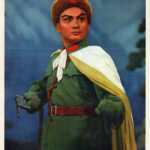According to Wikipedia, a poster “… is a temporary promotion of an idea, product or event put up in a public space for mass consumption.” But what is “public space”? Now more than ever, public space has migrated from physical places, bars, clubs, universities, etc, to the digital space. This migration has been occurring for years now, but perhaps it is more evident now that we do not have an alternative while COVID forces us to isolate and communicate using the internet.
With the prevalence of digital media, traditional posters have lost their significance and they are no longer the dominant media for advertising and propaganda. Leveraging on modern media, other types of visual expressions such as GIFs, “stories, or memes are now used to convey the messages traditional posters used to. But are these posters too? I believe they are. They present to us ideas in the digital public space and convey messages using visual elements and text. There are not so many differences between Toulouse Lautrec’s posters and some of the visual work one can find on the internet today. The tools and process for distributing the message may be different but, in essence, they serve the same purpose.
In modern times, the definition and uses of posters are broader than ever and traditional forms coexist with modern, more experimental ones. One very interesting use of traditional political posters in modern times was Obama’s HOPE by Shepard Fairey in 2006. It was widely adopted and distributed and conveyed a clear political message to the people, bringing back the classical use of this media and making it mainstream. It worked as a flashback to the most classic use of this form of communication and people adopted it massively.

